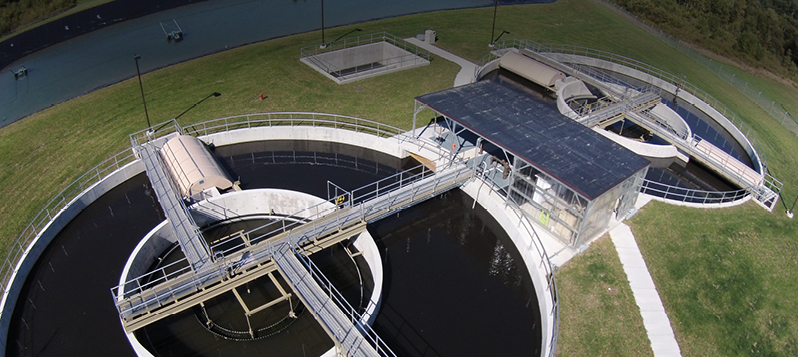Wastewater treatment plants throughout the United States process close to 34 billion gallons of wastewater each day. This wastewater comes from septic systems, sewers, factories, and storm runoff. As it contains human and animal waste, cleaners, body products, and grit, it has to go through several steps before it’s released back into a local body of water or storage tanks where it’s used to provide water to area homes and businesses.
Why clean it? There are several reasons, but the most important is that wastewater is full of bacteria that can harm you. Nitrogen and phosphorus damage lakes and rivers by increasing the rate at which harmful algae grows. This algae starve lakes of oxygen and lead to fish and other aquatic creatures to die.
Water is not safe to drink or swim in if it contains high levels of bacteria. If it’s used to water vegetables, it could spread diseases like E-coli or salmonella if the produce isn’t washed properly or cooked to kill the bacteria. There’s also the issue of heavy metals like lead and mercury. Mercury gets into the fish people eat, so it’s important to remove it before the water returns to lakes, rivers, and the oceans. Three key steps take place to clean and purify the water before it can be returned.
The First Step
The first stage of a water treatment process is to remove large pieces of waste and debris from the wastewater. Human and animal waste, sticks and stones, and trash are removed using screens and rakes. Screens come in different sizes so that larger material is caught first. The wastewater continues on the way passing through smaller and smaller screen sizes. Eventually, it will pass through a fine screen before it moves to the next process. All of that debris and waste that is caught goes to incinerators, compost, or landfills.
If the wastewater treatment plant is above the ground level, pumps are needed to move the remaining liquid to the next stage. Otherwise, gravity helps the remaining wastewater on its journey. At this point, the wastewater is still a mix of liquids with smaller clumps of fecal matter, sand, coffee grounds, and other finer grit that screens cannot catch.
The Second Step
At this point, one of three methods takes place. The goal is to remove those fine particles and start breaking down the organic materials.
#1 – Aeration
With aeration, the remaining wastewater is mixed the microorganisms that help break down all of the remaining organic materials. The process of decay begins in the aeration tanks. The aeration also helps by forcing grit to the bottom of the grit collection tanks where those fine particles of sand, coffee grounds, etc. can be removed and taken to compost piles or landfills. The liquids or organic sludge are pushed to the top of the bank where it continues the aeration process.
#2 – Biofiltration
Biofiltration is a slow process where the wastewater trickles through contact, sand, or trickling filters to capture sediment. This is not a process you’ll see used often as it’s slow and can only process so much wastewater at a time. Towns that use it are usually only processing small amounts of wastewater each day.
#3 – Oxidation Ponds
Oxidation ponds require heat to work properly, so they’re also not the first choice of most wastewater treatment plants. Wastewater is pumped to ponds where the water naturally breaks down over several weeks with the help of sun and algae. It’s uncommon to see them for treating wastewater in the U.S., but you might notice a farm with a manure pit that goes through the same process before the manure is reused to fertilize farm fields.
In the U.S., aeration is the most common second step in water treatment. It’s effective, efficient, and is capable of managing the amount of wastewater reaching most plants every day.
The Third and Final Step
Before the water is truly clear and safe to return to bodies of water or homes and businesses, it must be filtered to remove any off-color and odors. It’s treated with chemicals to kill any remaining bacteria and goes to tanks where the chlorinated water is exposed to UV to reduce chlorine to safe levels. From there, it’s piped to holding tanks or back into lakes, streams, or other bodies of water.
Save time and money on an inefficient wastewater system. Lakeside Equipment can help you upgrade your equipment for trouble-free operation with equipment that does a great job removing debris and solids automatically. Our goal is to design a system or arrange upgrades that boost your plant’s performance without driving up costs on the residents in your water district. Call us for more information.








